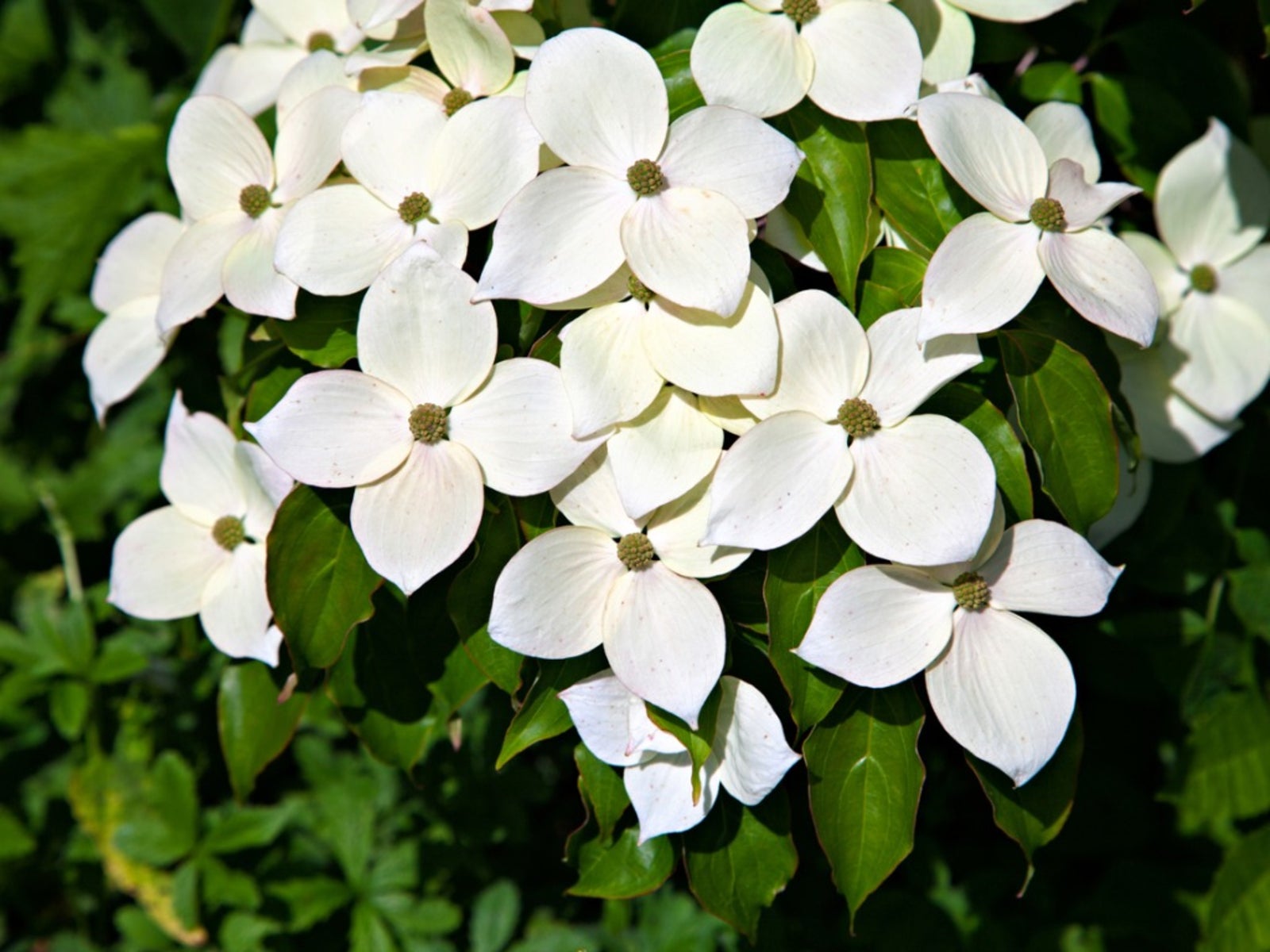Kousa Dogwood Care: Tips For Growing Kousa Dogwood Trees

When looking for an attractive specimen tree for their landscaping design, many homeowners go no further when they come upon the Kousa dogwood (Cornus kousa). Its unique mottled peeling bark sets the stage for a wide branching canopy, thick branches of bright green leaves, and drifts of white flowers every spring. Keep reading to get tips for growing Kousa dogwood trees and how to take care of Kousa dogwoods in the landscape. Kousa dogwood trees begin life with an upright design, but their branches grow out horizontally as the trees mature. The result is an attractive canopy that will fill a large portion of the yard. Many people use them as a focal point by attaching small twinkle lights to the underside of the canopy, creating a magical look for evening relaxation.
Kousa Dogwood Varieties
There are a number of Kousa dogwood varieties, and the only basic difference is how each tree looks.
- “Gold Star” has a golden stripe down each leaf in the spring, which darkens to a solid green later in the summer.
- “Satomi” and “Stellar Pink” have pink flowers instead of white ones.
- “Moonbeam” has giant flowers almost 7 inches (17 cm.) across and “Lustgarden Weeping” is a smaller version of the tree, often reaching about 8 feet (2.5 m.) tall while still spreading almost 15 feet (4.5 m.) wide.
Whatever Kousa dogwood cultivar you choose, it will have the same basic care needs as all the other varieties.
Tips for Growing Kousa Dogwood Trees
Kousa dogwood does much better when planted in the spring than in the fall, so wait until the last sign of frost has passed before putting in your new tree. When it comes to planting dogwood Kousa trees, it all begins with the soil. Like most dogwoods, these trees enjoy a spot with rich, moist soil in full sun to partial shade. Dig a hole about three times the size of the root ball on your sapling, but keep the depth the same. Plant your Kousa dogwood trees at the same depth they were growing in the nursery. Kousa dogwood trees aren't very drought-tolerant, so make sure to keep the soil moist throughout the summer, especially in the first three years when the tree is establishing itself. Add a circle of organic mulch about 3 feet (1 m.) wide around the base of the tree to help retain moisture to the roots. The bark of the Kousa dogwood is so attractive that you'll want to selectively prune branches to show it off as part of your Kousa dogwood care. If the bark looks good, the mature branches are even better. The older the tree gets, the more the branches grow horizontally, giving the tree a spreading look that with a decorative canopy. From the drifts of flowers in the spring to the abundant bright red berries late in the summer, Kousa dogwood trees are an ever-changing, attractive addition to almost any landscaping design.
Gardening tips, videos, info and more delivered right to your inbox!
Sign up for the Gardening Know How newsletter today and receive a free copy of our e-book "How to Grow Delicious Tomatoes".
-
 Looking For Plants To Give You The Soft And Fuzzies? Try These 5 Fuzzy Leaf Plant Options
Looking For Plants To Give You The Soft And Fuzzies? Try These 5 Fuzzy Leaf Plant OptionsLovers of texture, drama, silver foliage and tactile plants will adore these special sensory garden additions. These fuzzy leaf plant options will leave you all aglow
By Susan Albert
-
 Get Ready For A Summer Of Hummers! Grow These Full Sun Hummingbird Plants and Flowers
Get Ready For A Summer Of Hummers! Grow These Full Sun Hummingbird Plants and FlowersIf you’re lucky enough to enjoy a sunny backyard, make sure you are maxing out on your pollinator opportunities and grow these full sun hummingbird plants and flowers
By Tonya Barnett